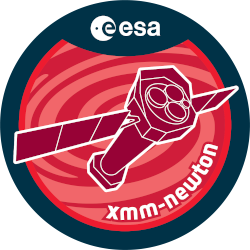

| Proposal ID | 081023 |
| Title | Post Common Envelope Binaries as probes of M dwarf stellar wind and habitable zo |
| Download Data Associated to the proposal | https://nxsa.esac.esa.int/nxsa-sl/servlet/data-action-aio?obsno=0810230101 |
| DOI | https://doi.org/10.5270/esa-nyqhird |
| Principal Investigator, PI | Dr David Wilson |
| Abstract | M dwarf stars are promising targets in the search for extrasolar habitableplanets. However, the effects of the high stellar activity of M dwarf hosts mayrender them uninhabitable. Studying stellar activity at M dwarfs is hindered bya lack of measurements of high-energy radiation, flare activity and stellar windrates. We propose to rectify this by observing a sample of Post Common EnvelopeBinaries with HST and XMM-Newton. The stellar wind of the M dwarf accretes ontothe white dwarf, producing metal lines in UV spectra, from which we canaccurately infer the stellar wind mass loss rate of the M dwarf, along withabundances of key elements. Simultaneous observations with XMM-Newton will probeX-ray flare occurrence rate and strength, in addition to coronal temperatures. |
| Publications |
|
| Instrument | EMOS1, EMOS2, EPN, OM, RGS1, RGS2 |
| Temporal Coverage | 2017-11-15T17:00:23Z/2018-07-22T08:18:02Z |
| Version | PPS_NOT_AVAILABLE |
| Mission Description | The European Space Agencys (ESA) X-ray Multi-Mirror Mission (XMM-Newton) was launched by an Ariane 504 on December 10th 1999. XMM-Newton is ESAs second cornerstone of the Horizon 2000 Science Programme. It carries 3 high throughput X-ray telescopes with an unprecedented effective area, and an optical monitor, the first flown on a X-ray observatory. The large collecting area and ability to make long uninterrupted exposures provide highly sensitive observations. Since Earths atmosphere blocks out all X-rays, only a telescope in space can detect and study celestial X-ray sources. The XMM-Newton mission is helping scientists to solve a number of cosmic mysteries, ranging from the enigmatic black holes to the origins of the Universe itself. Observing time on XMM-Newton is being made available to the scientific community, applying for observational periods on a competitive basis. |
| Creator Contact | https://www.cosmos.esa.int/web/xmm-newton/xmm-newton-helpdesk |
| Date Published | 2019-10-22T22:00:00Z |
| Last Update | 2025-08-04 |
| Keywords | "extrasolar habitable planets", "uv spectra", "dwarf stellar wind", "key elements", "white dwarf", "XMM", "stellar wind rates", "habitable zo", "envelope binary", "xmm newton", "stellar activity", "dwarf accretes", "coronal temperatures", "energy radiation", "dwarf stars", "stellar wind", "HST", "producing metal lines", "XMM-Newton", "flare activity", "promising targets", "dwarf hosts" |
| Publisher And Registrant | European Space Agency |
| Credit Guidelines | European Space Agency, Dr David Wilson, 2019, 'Post Common Envelope Binaries as probes of M dwarf stellar wind and habitable zo', PPS_NOT_AVAILABLE, European Space Agency, https://doi.org/10.5270/esa-nyqhird |